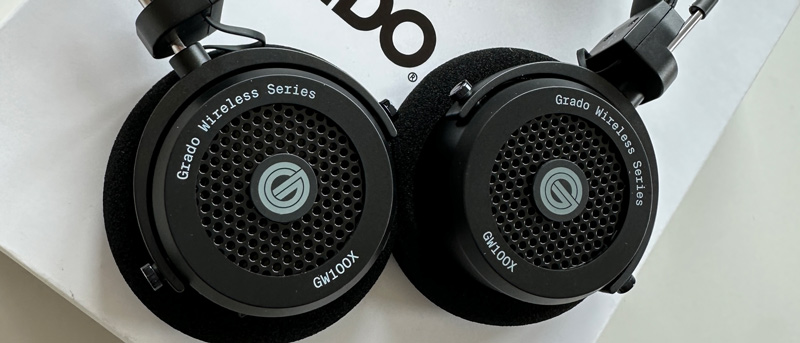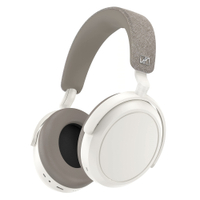TechRadar Verdict
The Grado GW100x forego almost all the niceties of modern wireless headphones, but they deliver the fundamentals with some style, and they might be exactly what wire-hating audiophiles have been waiting for.
Pros
- +
Poised, entertaining and faithful sound
- +
Light and comfortable
- +
Good battery life
Cons
- -
Open back leak sound freely
- -
Don’t look or feel anything special
- -
Short on features
Why you can trust TechRadar
Grado GW100x: One-minute review
The Grado GW100x are the Brooklyn-based brand’s latest wireless over-ear headphones. They replace the outgoing GW100, and not before time – that model originally launched in 2018 and was upgraded to ‘v2’ a couple of years ago.
The Grado GW100X's $249 / £249.99 (around AU$399) price suggests they're designed to compete more or less head-on with the best wireless headphones from the likes of Bose, Sennheiser and Sony, but don’t forget we’re dealing with Grado here – a company we usually cover for no-nonsense, affordable wired headphones. So while the GW100x are properly equipped where the serious business of delivering music is concerned, they don’t really provide the ‘full service’ experience those nominal rivals do.
But let's be clear, the sound quality is excellent. Being the very rare open-backed wireless headphones means the expression and expansiveness of the sound is peerless for this kind of thing – although it does mean they leak sound in both directions.
The Grado GW100x use Bluetooth 5.2 for wireless connectivity, with SBC, AAC and aptX Adaptive codec compatibility, and feature multi-point pairing. They’re equipped with big (44mm) full-range drivers from Grado’s latest ‘X’ series, and promise a frequency response of 20Hz - 20kHz – the full extent of human hearing, in other words. And as long as you’re not really pressing on in terms of volume, battery life is an impressive 46 hours.
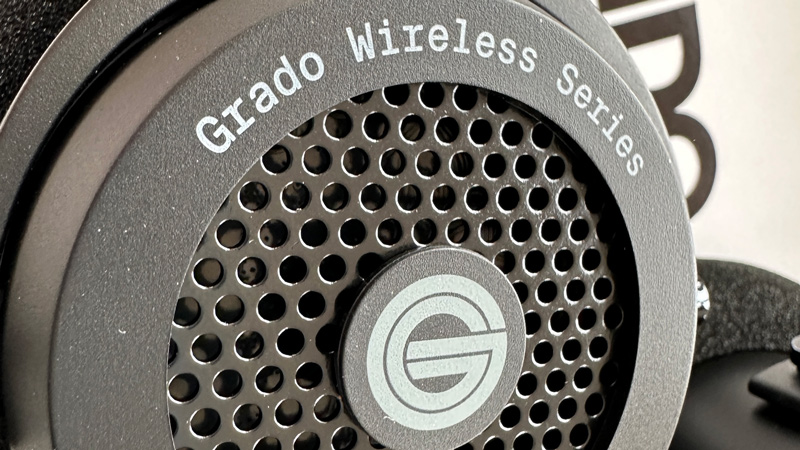
And as far as sound quality is concerned, the GW100x do their auspicious brand-name proud. The open-backed design is unusual in the extreme where wireless on- or over-ear headphones are concerned, and the company has obvious gone to quite a lot of trouble to prevent them leaking sound in the traditional open-backed manner (though obviously compared to closed-back headphones, there is leakage). This has a knock-on effect on the size of the soundstage the GW100x can create. By Grado standards it’s reasonably tight, but if this were any other brand of headphones I’d be very positive indeed about what a spacious, well defined and airy soundstage these headphones generate.
The overall sonic balance is really well judged. Low frequencies have plenty of body and heft, but they’re nicely textured and carry plenty of fine detail, and they’re controlled well enough to give rhythms proper expression and keep momentum levels high. At the opposite end of the frequency range there’s the same sort of eloquence, the same sort of fanatical detail retrieval and the same sort of natural, uncolored tonality. In between, the mid-range projects well, and makes a singer’s technique and attitude absolutely clear. And the entirety of the frequency range knits together well, so the GW100x sound just as poised as they do potent.
Dynamic headroom is considerable, so when a band switches from ‘whispered middle eight’ to ‘almighty charge into the final chorus’ the Grado can track the changes in volume with no problems. And they’re just as unstressed when it comes to the more subtle harmonic variations that go to making a recording sound full and complete. There’s a muscularity to the GW100x sound that means they can handle the rough stuff with no problems, but they’re equally capable of being tender and understated if the music demands it.
So the GW1000x cover off the ‘sound’ aspect in fine style, but where the talk would now ordinarily turn to all the other stuff like active noise-cancellation, control app functionality and so on, the Grado cupboard is bare. There’s no active noise-cancellation here, no control app to allow you to adjust EQ levels and stuff like that… heck, the Grado GW100x don’t even come with a carry-case.
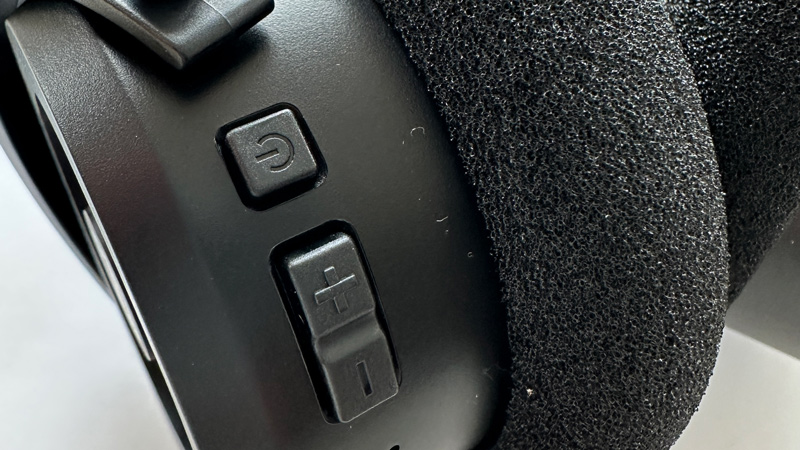
The lack of carry case means controls are all physical: the right ear-cup houses three quite plasticky buttons in its quite plasticky circumference, which allow you to take care of ‘power on/off’, ‘Bluetooth pairing’, ‘play/pause’, ‘skip forwards/backwards’, volume up/down’, ‘answer/end/reject call’ and ‘summon voice assistant’.
Interactions with your source player’s native voice-assistant are smooth, and the same can be said for call quality – the mics integrated into the GW100x do their thing with a degree of panache. The right ear-cup also has a USB-C input for battery-charging and a 3.5mm input for hard-wired usage.
‘Plasticky’ is a perfectly valid description of the way the GW100x look and feel if you line them up against any price-comparable rival – like almost all Grado headphones, ‘sophistication’ is not on their list of virtues. The feel is inexpensive, from the minimally padded headband to the bog-standard foam earpads. If I were a less charitable man I might even call them ‘agricultural’. Perceived value, it’s safe to say, is not especially high here – you have to hear them to feel where the money is going.
They’re comfortable, though – at just 188g they’re no kind of burden to wear. And adjusting the headband to get the earpads in position is easy too, thanks to Grado’s familiar (and, let’s not beat around the bush, slightly agricultural) ‘friction pole’ mechanism.
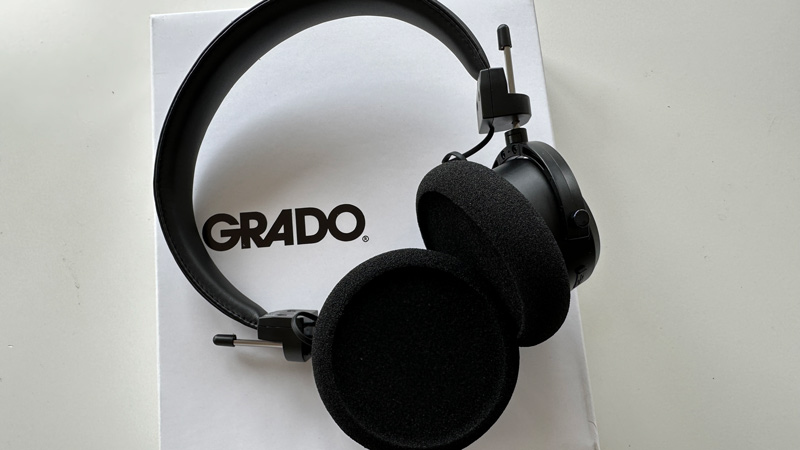
Grado GW100x review: Price and release date
- Cost $249 / £249.99 (around AU$399)
- Launched in November 2022
The Grado GW100x are on sale now, and in the UK they are priced at £249. In Grado’s native America they sell for $249, while in Australia you’ll have to part with AU$399 or thereabouts.
At that price, they're competing with big names such as the Sony WH-1000XM5, Bose QuietComfort 45 and aforementioned Sennheiser Momentum 4 Wireless. It's very hot competition – but the Grado are diferent.
Grado GW100x review: Specs
| Drivers | 44m |
| Active noise cancellation | No |
| Battery life | 46 hours |
| Weight | 188g |
| Connectivity | Bluetooth 5.2 (SBC, AAC, aptX Adaptive) |
| Frequency range | 20Hz - 20kHz |
| Waterproofing | No |
| Other features | None |
Should I buy the Grado GW100x?
| Features | Battery life is good, and great to have aptX Adaptive. Not a lot going on here otherwise… | 3 / 5 |
| Sound quality | As good as wireless headphones at this price get. Natural, expressive and impossibly detailed. | 5 / 5 |
| Design | Comfortable and light, but not very premium-feeling overall. | 3 / 5 |
| Value | Can't fault them for audio quality at the price, but you definitely can for feature flexibility. | 4 / 5 |
Buy them if...
You put ‘great sound quality’ at the top of your wish-list
Not for the first time, and surely not for the last, Grado has delivered a pair of headphones that have class-leading pound-for-pound sound quality.
You envisage long listening sessions
The GW100x are comfortable for the long haul, and have the stamina to rock around the clock and then some.
You want to switch between devices
Multi-point pairing is one feature these Grados do have, despite the light list of specs overall.
Don't buy them if...
You want to listen in public
‘Not as leaky as you might think’ is emphatically not the same as ‘not leaky’.
You think premium money should buy premium materials
Grado has concentrated all its efforts on the way these headphones sound.
Your ears are of particularly generous size
The earpads here are far from the biggest around.
Grado GW100x review: Also consider
Sony WH-1000XM4
Replaced by the XM5 – but still for sale, and they’re down at GW100x money. Hugely accomplished all-rounders with a stack of extended functionality, the Sonys look and feel the part much more than the Grado – and they’re no slouches where sound quality is concerned, either. But it's a warmer, less rigorously neutral sound. Here's our full Sony WH-1000XM4 review.
Sennheiser Momentum 4 Wireless
Our pick of the audiophile-friendly wireless headphones that have noise cancellation and no leakage – and tons of very smart features. And a huge battery life, too. Basically, if you want what we've praised the Grado for, but with noise cancellation too, get these – here's our full Sennheiser Momentum 4 Wireless review.
How I tested the Grado GW100x
- Tested for a week or more
- Used in a home office, on the street and (once, bravely) on public transport
- Apple iPhone 14 Pro and Nothing Phone (1) as source players
The positives of the Grado GW100x should be obvious by now - they sound lovely, they are comfortable in the extreme and they last for ages between charges. They have multi-point pairing too, so I was able to connect them to my Apple MacBook Pro as well as my smartphone while working.
They’re just as effective a companion when out and about - except on public transport, where their shameless leaking of sound made me tremendously self-conscious (and also quite unpopular with my fellow travellers). No other wireless headphones have made me quite so anxious to be home, alone.
- Read TechRadar's reviews guarantee
- First reviewed: July 2023
Simon Lucas is a senior editorial professional with deep experience of print/digital publishing and the consumer electronics landscape. Based in Brighton, Simon worked at TechRadar's sister site What HiFi? for a number of years, as both a features editor and a digital editor, before embarking on a career in freelance consultancy, content creation, and journalism for some of the biggest brands and publications in the world.
With enormous expertise in all things home entertainment, Simon reviews everything from turntables to soundbars for TechRadar, and also likes to dip his toes into longform features and buying guides. His bylines include GQ, The Guardian, Hi-Fi+, Metro, The Observer, Pocket Lint, Shortlist, Stuff T3, Tom's Guide, Trusted Reviews, and more.
